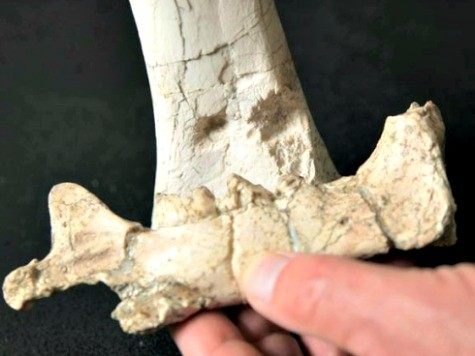California’s recent rainstorms have brought fossils, several of which are believed to be millions of years old, ashore in the Bay Area and along the rest of Pacific coast.
Among the rarer fossil finds this week was the tooth of a megalodon, a 60-foot, 6,000 pound great white shark that lived in prehistoric times, according to the San Francisco Chronicle. The tooth could be as many as 10 million years old.
Also found recently were the teeth of an extinct species of sea lion, as well as the teeth from at least 20 distinct species of shark. Scientists also discovered what are believed to be the ribs of the extinct Steller’s sea cow, and the tooth of the extinct Paleoparadoxia, a sea mammal that walked on the ocean floor and made their home on the Pacific coast between 10 and 20 million years ago.
Most of the discoveries were reportedly made by Santa Cruz marine biologist and Chronicle field scout Giancarlo Thomae. Thomae explained that heavy, wind-driven rainstorms have caused valuable fossils to wash up on shores and in coastal foothills, drawing scientists and intrepid explorers to what could be considered the region’s greatest natural treasure hunt.
“What happens is the heavy rain, wind and runoff erodes mountain gullies, creek beds and coastal bluffs,” Thomae told the Chronicle. “That can uncover fossil deposits in ancient sandstone formations. In the coastal hills, floodwaters can carry the fossils down creeks and into the ocean. The hydraulic action of the surf zone then digs them up and then, in a high tide, deposits them on the beach. That’s one way it can work.”
The discovery of the Paleoparadoxia tooth was especially significant, Thomae told the Chronicle. “We believe less than 10 and perhaps only five or so skeletons of Paleoparadoxia have been found,” Thomae said. “One was found almost intact on the Peninsula when the Stanford Linear Accelerator was built in the early 1960’s.”
Scientist Tom Hesseldenz told the Chronicle that factors apart from rain, like volcanic eruptions, fluctuations in sea level, and geologic movement, could also play a role in the reemergence of fossils.
“San Francisco Bay is only 5,000 years old,” Hesseldenz told the paper. “During the height of the most recent Ice Age, the coast of the Bay Area was out at the Farallones. What is going on is very complex but incredibly fascinating.”
While would-be explorers are undoubtedly tantalized by the prospect of uncovering a rare fossil of their own, Thomae cautioned that it is illegal to collect items from federal and state parks or beaches. His suggestion: take a picture of the discovery and share it with a park ranger.

COMMENTS
Please let us know if you're having issues with commenting.